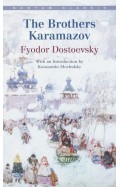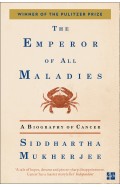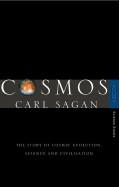Scent - A Natural History of Fragrance
By: Elise Vernon Pearlstine
-
Rs 6,795.75
- Rs 7,995.00
- 15%
You save Rs 1,199.25.
Due to constant currency fluctuation, prices are subject to change with or without notice.
Scent - A Natural History of Fragrance
By: Elise Vernon Pearlstine
Rs 6,795.75 Rs 7,995.00 Ex Tax :Rs 6,795.75
Zubin Mehta: A Musical Journey (An Authorized Biography)
By: VOID - Bakhtiar K. Dadabhoy
Rs 892.50 Rs 1,050.00 Ex Tax :Rs 892.50
Letters from a Stoic: Epistulae Morales Ad Lucilium Classics
By: Seneca
Rs 2,245.50 Rs 2,495.00 Ex Tax :Rs 2,245.50
Discourse on Method and the Meditations
By: Rene Descartes
Rs 2,335.50 Rs 2,595.00 Ex Tax :Rs 2,335.50
The Man in the High Castle: Penguin Essentials
By: Philip K. Dick
Rs 2,245.50 Rs 2,495.00 Ex Tax :Rs 2,245.50
Is Pluto a Planet?: A Historical Journey through the Solar System
By: David A. Weintraub
Rs 6,115.75 Rs 7,195.00 Ex Tax :Rs 6,115.75
Beyond UFOs: The Search for Extraterrestrial Life and Its Astonishing Implications for Our Future
By: Jeffrey Bennett
Rs 4,797.50 Rs 9,595.00 Ex Tax :Rs 4,797.50
The Islamist Why I Became an Islamic Fundamentalist What I Saw Inside and Why I Left
By: Ed Husain
Rs 510.00 Rs 600.00 Ex Tax :Rs 510.00
The Demon Haunted World Science As A Candle In The Dark
By: Carl Sagan
Rs 3,595.50 Rs 3,995.00 Ex Tax :Rs 3,595.50
Letters from a Stoic: Epistulae Morales Ad Lucilium Classics
By: Seneca
Rs 2,245.50 Rs 2,495.00 Ex Tax :Rs 2,245.50
Discourse on Method and the Meditations
By: Rene Descartes
Rs 2,335.50 Rs 2,595.00 Ex Tax :Rs 2,335.50
The Man in the High Castle: Penguin Essentials
By: Philip K. Dick
Rs 2,245.50 Rs 2,495.00 Ex Tax :Rs 2,245.50
Altruism - The Science and Psychology of Kindness
By: Matthieu Ricard
Rs 2,970.75 Rs 3,495.00 Ex Tax :Rs 2,970.75
Claudia and the New Girl The Babysitters Club Graphic Novel book 9
By: Ann M. Martin
Rs 2,245.50 Rs 2,495.00 Ex Tax :Rs 2,245.50
The Undertaker's Assistant - A Captivating Post-Civil War Era Novel of Southern Historical Fiction
By: Amanda Skenandore
Rs 5,575.50 Rs 6,195.00 Ex Tax :Rs 5,575.50
Mini Marks Magnetic Booksmark (Mind Body and Spirit - 2505)
By: That Company Called IF UK
Rs 535.50 Rs 595.00 Ex Tax :Rs 535.50
Marvel Avengers Age of Ultron Hero Activities: Activities, Puzzles and Games Inside!
By: Parragon Books Ltd
Rs 420.75 Rs 495.00 Ex Tax :Rs 420.75
The Real Anthony Fauci: Bill Gates, Big Pharma, and the Global War on Democracy and Public Health (Children’s Health Defense)
By: Robert F. Kennedy Jr.
Rs 3,905.75 Rs 4,595.00 Ex Tax :Rs 3,905.75
City of Fallen Angels The Mortal Instruments Book 4
By: Cassandra Clare
Rs 2,065.50 Rs 2,295.00 Ex Tax :Rs 2,065.50
Dream Bedroom: Recycled Materials to Make Cool Stuff Ecocrafts
By: Rebecca Craig
Rs 747.50 Rs 1,495.00 Ex Tax :Rs 747.50
Gaslight - The Second Philip Taiwo Investigation
By: Femi Kayode
Rs 3,225.75 Rs 3,795.00 Ex Tax :Rs 3,225.75
Food for Kids with Allergies Australian Womens Weekly Essential
By: Australian Women's Weekly
Rs 918.75 Rs 1,225.00 Ex Tax :Rs 918.75
Pak Bharat Jungh 1971
By: Major General Hakeem Arshad Qureshi
Rs 1,800.00 Rs 2,000.00 Ex Tax :Rs 1,800.00
Zubin Mehta: A Musical Journey (An Authorized Biography)
By: VOID - Bakhtiar K. Dadabhoy
Rs 892.50 Rs 1,050.00 Ex Tax :Rs 892.50
Scent - A Natural History of Fragrance
By: Elise Vernon Pearlstine
Rs 6,795.75 Rs 7,995.00 Ex Tax :Rs 6,795.75
Letters from a Stoic: Epistulae Morales Ad Lucilium Classics
By: Seneca
Rs 2,245.50 Rs 2,495.00 Ex Tax :Rs 2,245.50
Discourse on Method and the Meditations
By: Rene Descartes
Rs 2,335.50 Rs 2,595.00 Ex Tax :Rs 2,335.50
The Man in the High Castle: Penguin Essentials
By: Philip K. Dick
Rs 2,245.50 Rs 2,495.00 Ex Tax :Rs 2,245.50












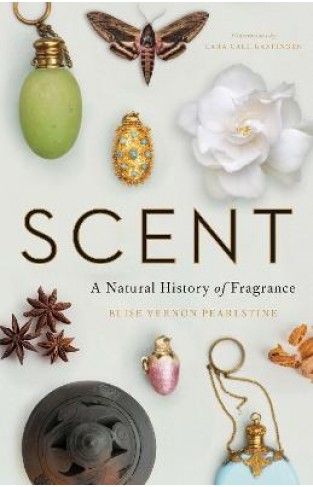
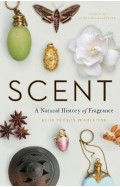
-120x187.jpg?q6)





